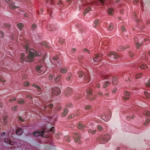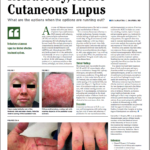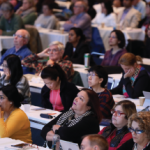 ORLANDO—Medicine is both a science and an art, and the intersection of the two disciplines is often demonstrated through inventive techniques in medical education. At the 2022 ACR Education Exchange, April 28–May 1, a series of speakers touched on these subjects by discussing two disparate but important topics: engaging fellows in journal club activities and teaching fellows how to evaluate cutaneous changes of lupus erythematosus in patients with various skin tones.
ORLANDO—Medicine is both a science and an art, and the intersection of the two disciplines is often demonstrated through inventive techniques in medical education. At the 2022 ACR Education Exchange, April 28–May 1, a series of speakers touched on these subjects by discussing two disparate but important topics: engaging fellows in journal club activities and teaching fellows how to evaluate cutaneous changes of lupus erythematosus in patients with various skin tones.
Rethinking Journal Club
Lisa Criscione-Schreiber, MD, MEd, professor of medicine, vice chair for education, Duke University School of Medicine, Durham, N.C., gave a lecture that began with why journal clubs are valuable. She noted they help fellows learn how to critically appraise literature and review seminal papers, and stay current on the practice of evidence-based medicine. They also teach research methodology and lifelong learning skills.
Possible downsides of the journal club format include a potentially unexciting format for passive learning, inadequate preparation on the part of trainee presenters and lack of clear clinical context or take-home messages. The format may also result in the tendency to forget the facts discussed.
Dr. Criscione-Schreiber outlined an adult-learning framework, which stresses that learning should be problem-focused, teaching should have an immediate impact and relevance, and experience should form the basis for effective learning. With this framework in mind, the goals of optimizing journal club included:
- Engaging fellows in active learning with respect to treatments grounded in pivotal clinical trials; and
- Ensuring fellows fully understand and remember the details of medical journal articles to support their clinical decision-making.
The first step to creating this type of journal club is to begin with pre-club meeting preparation and the identification of a question, such as “What is the ideal treatment for lupus nephritis?” Next, select two to four manuscripts and create a blank table that addresses the important aspects of each paper (e.g., study design, inclusion and exclusion criteria, primary and secondary outcomes, results, limitations). Then, assign the completion of different parts of the table to each fellow.
During the journal club, the faculty leader must provide the background and rationale for the session, show the blank table on a projection screen or shared desktop, fill in the table in real time, distribute the table to all participants and request feedback on the session.
Although Dr. Criscione-Schreiber has not formally measured the outcomes of this approach to journal club, she anecdotally noted success in engaging participants through small groups of fellows, as well as through larger interdisciplinary groups. She also noted high levels of engagement by fellows and has heard from attendees that the sessions are high yield and provide clear take-home messages for learning on each subject. Additionally, this activity is useful because it addresses several competencies required by the Accreditation Council for Graduate Medical Education, such as problem-based learning and improvement, medical knowledge and patient care.



